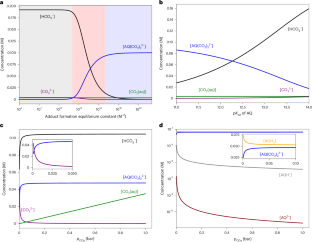2025-01-09 ハーバード大学
<関連情報>
- https://seas.harvard.edu/news/2025/01/ins-and-outs-quinone-carbon-capture
- https://www.nature.com/articles/s44286-024-00153-y
キノン水溶液を用いた電気化学的炭素捕獲・放出のその場技術 In situ techniques for aqueous quinone-mediated electrochemical carbon capture and release
Kiana Amini,Thomas Cochard,Yan Jing,Jordan D. Sosa,Dawei Xi,Maia Alberts,Michael S. Emanuel,Emily F. Kerr,Roy G. Gordon & Michael J. Aziz
Nature Chemical Engineering Published:16 December 2024
DOI:https://doi.org/10.1038/s44286-024-00153-y

Abstract
Here we elucidate the intricate interplay between the nucleophilicity swing and pH swing mechanisms in aqueous quinone-mediated carbon capture systems, showcasing the critical role of understanding this interplay in the material discovery cycle. This insight prompts the development of two in situ techniques. The first technique employs in situ reference electrodes and capitalizes on discernible voltage signature differences between quinones and quinone–CO2 adducts, allowing for the quantification of the isolated contributions of the two mechanisms. The second method is developed based on our finding that the adduct form of the quinone exhibits a fluorescence emission from an incident light at wavelengths distinct from the fluorescence of the reduced form. Thus, we introduce a noninvasive, in situ approach using fluorescence microscopy, providing the capability to distinguish species with subsecond time resolution at single-digit micrometer resolution. This technique holds promise for studying quinone-based systems for carbon capture and beyond.



